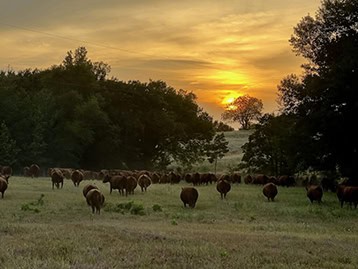
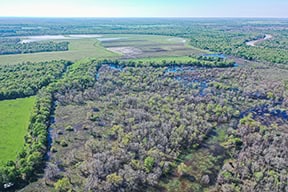
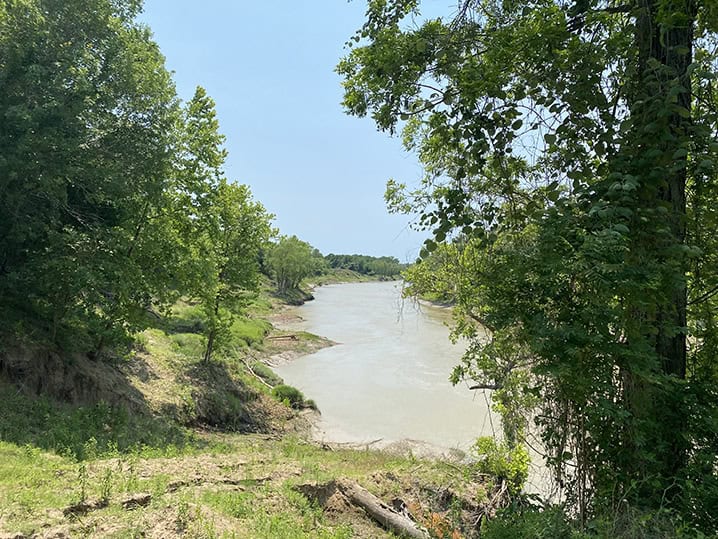
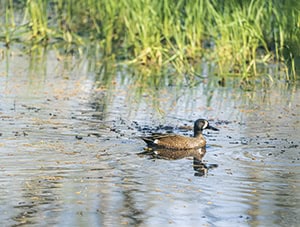
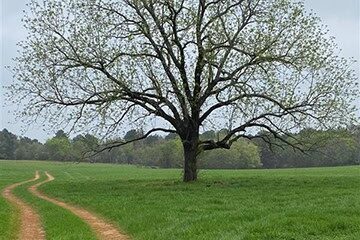
Conservation Equity Management (CEM) is advancing a privately funded, phased groundwater development project focused on the Carrizo-Wilcox Aquifer in East Texas. The Redtown Ranch and Pine Bliss Water Projects are grounded in careful planning, scientific rigor, and a commitment to responsible development.
CEM’s applications to the Neches & Trinity Valleys Groundwater Conservation District (NTVGCD) are for drilling permits to collect on-the-ground data to validate the hydrogeologic models according to the standards of both the Texas Department of Licensing and Regulation, Texas Commission on Environmental Quality and NTVGCD.
Texas is experiencing a water supply crisis, driven by dramatic population growth, increased demand for power and water, and regional droughts. Texas has the water it requires, including 5 billion acre-feet of groundwater stored in aquifers across the state. However, the water is not available where it is often most needed, and Texas does not have the necessary infrastructure to move water efficiently from the source to areas across the state.
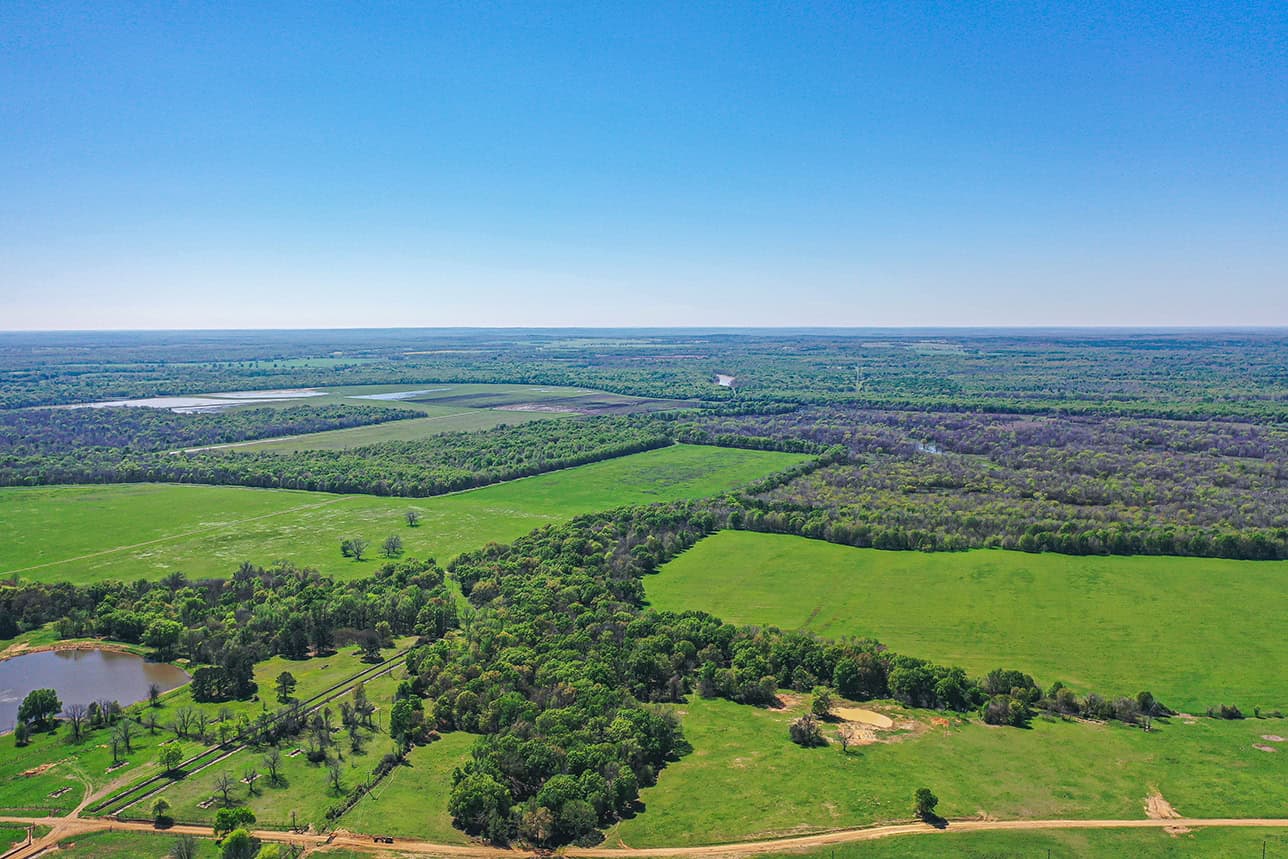
The CEM team is made up of passionate scientists, engineers, foresters, biologists, and ranchers who are deeply committed to conserving, restoring and managing healthy ecosystems across Texas.
Our phased, science-based approach reflects a responsible path forward for helping meet the growing water needs of communities impacted by the rapid pace of change in Texas, leveraging the water resources in the Carrizo-Wilcox Aquifer, located in East Texas.
The Carrizo-Wilcox Aquifer is a major groundwater system that spans 23 million acres across 66 East Texas counties.
Data does not support the claims that these projects will negatively impact the long-term reliability of the Carrizo-Wilcox Aquifer. Any production would be supported by scientific modeling designed to ensure its ongoing ability to provide water to the people and businesses who currently rely on its production.
The Texas Water Development Board (TWDB) estimates there are 170 million acre-feet of water in storage in the Anderson County portion of the Carrizo-Wilcox Aquifer. The production estimate CEM has provided to NTVGCD is 33,132 acre-feet per year. Based upon the TWDB’s Total Estimated Recoverable Storage Report, CEM’s estimate is less than .020 percent (2/100 of 1 percent) of the water available in Anderson County.
(Source: TWDB, TOTAL ESTIMATED RECOVERABLE STORAGE FOR AQUIFERS IN GROUNDWATER MANAGEMENT AREA 11, Page 14)
*One acre-foot is the volume of water needed to cover 1 acre of land to a depth of 1 foot. It is equivalent to approximately 326,000 gallons.
No Data Found
No Data Found
The TWDB estimates there are 66 million acre-feet of water in storage in the Henderson County portion of the Carrizo-Wilcox Aquifer. The 15,840 acre-feet per year production estimate CEM provided to NTVGCD is .024 percent (2.4/100 of 1 percent) of the water available in Henderson County.
(Source: TWDB, TOTAL ESTIMATED RECOVERABLE STORAGE FOR AQUIFERS IN GROUNDWATER MANAGEMENT AREA 11, Page 14)
*One acre-foot is the volume of water needed to cover 1 acre of land to a depth of 1 foot. It is equivalent to approximately 326,000 gallons.
Pictured: The Trinity River adjacent to Redtown Ranch
On May 31, 2024 , CEM filed two separate Exploratory Drilling Permit Applications with the Neches and Trinity Valleys Groundwater Conservation District (NTVGCD). Over the next 11 months, CEM responded to multiple requests for information from the NTVGCD as part of its administrative completeness review of the applications seeking:
A permit to drill 21 wells at Redtown Ranch, which covers approximately 7,200 acres in Anderson and Houston Counties
A permit to drill 22 wells at Pine Bliss Ranch, which sits on 4,100 acres in Henderson County
Once approved, these permits will allow CEM to drill exploratory test wells on the Redtown Ranch and Pine Bliss properties and collect on-site data to validate the hydrogeologic models that have been forecasted by engineers — a science-based effort that has been ongoing for the past 18 months.
CEM has consistently and accurately followed the NTVGCD’s application process required by state law.
Redtown Ranch and Pine Bliss applications were included in public notices and discussed as part of the NTVGCD meeting agendas of 10 separate meetings, leading up to the public hearing, between July 2024 and May 2025.
April 18, 2024
CEM meeting with the NTVGCD to introduce the company, explain its plans to explore a groundwater project, and notify the board of its intention to submit permit applications.
May 15, 2024
CEM meeting with Groundwater Management Area 11 Board of Directors to explain its plans to explore a groundwater project and notify the board of its intention to submit permit applications.
May 31, 2024
Drilling/Production applications filed with NTVGCD including $17,200 ($400 per well) submitted to NTVGCD.
August 8, 2024
NTVGCD Application Deficiency Notice
August 14, 2024
CEM communicates with NTVGCD General Counsel John Stover re mapping supporting application.
September 19, 2024
Revised applications addressing deficiencies sent to NTVGCD, along with $30,000 per site ($60,000 total) in response to a request from the general manager of the NTVGCD to defray the cost of permit processing.
September 22, 2024
NTVGCD confirmed to have received revised Applications and access to Data Room.
October 17, 2024
Hydrogeologic Reports reflecting 5-year modeled pumping linked to a 50-year planning horizon.
October 23, 2024
CEM received a letter from John Stover indicating application deficiencies were addressed, EXCEPT for modeling (Stover requests the models be run for 50 years instead of 5 years).
October 24, 2024
CEM instructs LRE Water engineers to run 50-year model.
October 28, 2024
James Beach, P.G., a consulting hydrogeologist for NTVGCD, sends a letter communicating additional Information Requests per Stover 10-23-24 letter. CEM uploaded the requested files to Data Room that same day.
October 29, 2024
Stover Letter transmitting 10-28-24 Beach Letter.
November 20, 2024
Applicant submits responsive information to all outstanding NTVGCD (Stover, including Beach) Requests for Information.
December 11, 2024
Stover Letter stating NTVGCD reviewing applications, and Beach contacted LRE for more model files.
January 10, 2025
CEM received letter from Stover indicating Applications remain administratively deficient (Stover makes new request for modeling of the impact of combined applications and all NTVGCD issued permits).
March 20, 2025
Applications identified on the NTVGCD Board agenda for an “Update” (no action authorized).
April 17, 2025
CEM team attends GCD board meeting and presents multifield modeling, which is declared admiratively complete by board vote, on the recommendation of Stover.
June 5, 2025
NTVGCD issues public notice of June 19, 2025 public hearing regarding Redtown Ranch and Pine Bliss projects, as required by Texas law.
June 19, 2025
NTVGCD holds public hearing regarding Redtown Ranch and Pine Bliss projects in compliance with state law, and votes to refer the matter to the State Office of Administrative Affairs in 90 days.
Myth
CEM has requested permits, which if granted, will allow the company to extract water from the aquifer without limit and without community input.
Fact
Grounded in thorough hydrogeologic studies, CEM filed applications with the NTVGCD for permits solely to drill exploratory wells on the properties for the purpose of conducting aquifer testing to verify the findings of these studies. Exploratory wells will be tested according to the standards of both the Texas Department of Licensing and Regulation and Texas Commission on Environmental Quality, and the Neches and Trinity Valleys Groundwater Conservation District (NTVGCD).
CEM will then submit those results to the District. Only if the data supports CEM studies — and confirms that the aquifer will support responsible production — will CEM submit production permit applications that include detailed projections of annual production and any proposed exports, if applicable. As part of the application process, public notices will be issued, giving local residents the opportunity to share their input.
Myth
The production numbers included in the drilling permit application for the Red Town Ranch project would mean withdrawing more water from the Anderson County portion of the aquifer than it could sustain.
Fact
The Texas Water Development Board (TWDB) estimates there are 170 million acre-feet of water in the Anderson County portion of the Carrizo-Wilcox Aquifer. The production estimate CEM provided was 33,132 acre-feet per year, which is less than .02 percent (2/100 of 1 percent) of the water in this portion of the Carrizo-Wilcox Aquifer.
Myth
The production numbers included in the drilling permit application for the Pine Bliss project would mean withdrawing more water from the Henderson County portion of the aquifer than it could sustain.
Fact
The Texas Water Development Board estimates there are 66 million acre-feet of water in the Henderson County portion of the Carrizo-Wilcox Aquifer. The 15,840 acre-feet per year production estimate CEM provided would be .024 percent (2.4/100 of 1 percent) of the water in this portion of the Carrizo-Wilcox Aquifer.
Myth
Producing water from the Carrizo-Wilcox aquifer will result in community water systems and private wells in our local counties and communities to go dry.
Fact
While CEM is only requesting exploratory drilling permits at this time, not production permits, there is no data to support the claim these projects will negatively impact the aquifer or surrounding wells. Any production by CEM would be supported by scientific analysis and modeling designed to ensure the responsible use of the aquifer and its ongoing ability to provide water to the people and businesses who rely on it.
Myth
Producing water from the Redtown Ranch and Pine Bliss projects could risk exceeding the Modeled Available Groundwater (MAG) volume established by the Texas Water Development Board.
Fact
Although CEM is requesting only exploratory drilling permits at this time, it is important to understand what is meant by “Modeled Available Groundwater.”
Water conservation districts determine “Desired Future Conditions” (DFCs) which are used by the Texas Water Development Board (TWDB) to calculate a “Modeled Available Groundwater” (MAG). The DFCs represent an arbitrarily selected condition in the aquifer fifty years in the future. The TWDB uses the DFCs to calculate an estimated projection of the annual production from the aquifer that will likely achieve the DFC irrespective of whether the DFC is reasonable or necessary to protect the health of the aquifer. The TWDB provides the calculated MAG to the district to use as a Planning Tool. The MAG is not representative of the capacity of the aquifer, nor is it a statutory limit or regulatory cap to ensure sustainable production from the aquifer.
The current MAG for the Anderson County portion of the Carrizo-Wilcox Aquifer is 43,615 acre-feet, which is a tiny fraction (2/100 of a percent) of the 170 million acre-feet of water the TWDB estimates is the Total Estimated Recoverable Storage (TERS) of the Anderson County portion of the Carrizo-Wilcox Aquifer.
Regardless, the potential production numbers provided for the Redtown Ranch and Pine Bliss projects fall well below the MAGs set by the TWDB for NTVGCD.
Myth
The studies conducted by CEM are biased and cannot be trusted.
Fact
At the onset, CEM commissioned highly regarded hydrogeologic scientists and engineering firms in Texas to perform preliminary analyses of the groundwater resources underlying the Redtown Ranch and Pine Bliss properties, as well as an in-depth analysis of the sustainability of the Carrizo-Wilcox Aquifer and related groundwater formations.
Myth
The water levels in the Carrizo-Wilcox Aquifer have been decreasing at a rapid rate, and it cannot sustain additional water production.
Fact
According to the findings in studies commissioned by the groundwater conservation districts, including NTVGCD, that comprise the Groundwater Management Area 11 (GMA 11), which is charged with conducting regional planning for the aquifers within GMA 11, including the Carrizo-Wilcox Aquifer in Anderson County, the predicted groundwater drawdown in the Carrizo-Wilcox Aquifer from 2013-2024 was 139 feet. The actual decline was only 6 feet.
In Henderson County, the predicted drawdown in the Carrizo-Wilcox Aquifer was 80 feet. The actual decline was only 5 feet.
These results demonstrate that the aquifer is maintaining water levels much higher than previously predicted and that there is far more water in the system than the State’s current planning models suggest.
Myth
The Carrizo-Wilcox Aquifer is too vital to communities of East Texas for it to provide water for other communities.
Fact
Texas has a water supply crisis, driven by significant population growth, increased demand for power and water, and regional droughts and the fact that the State’s bountiful water resources are not located where they are needed.
Texas has plenty of water, including 5 billion acre-feet of groundwater stored in aquifers across the state. The State also does not have the infrastructure needed to move the water from where it is located to where it is needed. These are among the factors that led Governor Abbott to declare water an emergency issue during the last session, the impetus for SB 7 and HJR 7, sponsored by State Rep. Cody Harris. The Legislation will provide $20 billion in state funds for infrastructure and new water supply projects.
Myth
CEM filed its exploratory drilling permit application secretly to avoid public knowledge of its plans.
Fact
CEM filed its exploratory drilling permit application with the Neches and Trinity Valleys Groundwater Conservation District on May 31, 2024, and responded to multiple information requests from the NTVGCD and its legal counsel over the next eleven months, entirely in keeping with legal requirements and a commitment to transparency.
Myth
CEM has contracts for water production from the Carrizo-Wilcox aquifer.
Fact
CEM has filed for exploratory drilling permits at Redtown Ranch and Pine Bliss. The company does not have any contracts to export or provide water to other off-takers.
Myth
What CEM is proposing is an illegal taking of water than belongs to the residents of East Texas.
Fact
Texas is a private property state. Groundwater, as a matter of law, is private property. CEM has the right to access the groundwater under the Redtown Ranch and Pine Bliss Ranch.
Water water everywhere, nor any drop to … power a large state with a growing population, and massive energy needs? You might recognize the adapted line above, made famous by Samuel Taylor Coleridge’s epic poem,...
Margaret and Robert Drake wanted to protect their Glen Rose ranchland — and the water that runs through it — from rapid development they saw expanding west from Fort Worth. The sprawling, hilly 82 acres...
This article is the first in a series by The Dallas Express that focuses on the Texas water crisis and the various proposed solutions to address the crisis. Despite the recent and tragic flooding in...
Kyle Bass is a name many in East Texas become familiar with when a notice for application of permits for high-capacity and large volume groundwater production in the Neches & Trinity Valleys Groundwater Conservation District...
Conservation Equity Management (CEM) is a Texas-based private equity firm that leverages private capital, innovation and a commitment to conservation to address urgent environmental challenges. Our projects include investments in more than 40,000 acres of conservation-focused assets in Texas, South Carolina, Georgia, Alabama, Virginia, and West Virginia, with projects in ecological restoration, timber management, responsible water use, regenerative agriculture, regulatory offsets, and recreation.
CEM is focused on solutions to the water shortages in Texas, particularly in areas impacted by drought and significant population growth. The company is currently assessing the groundwater availability and production potential around the state. This includes the Carrizo-Wilcox Aquifer, which spans 23 million acres across 66 Texas counties.
Redtown Ranch and Pine Bliss are conservation ranch projects managed by CEM. Redtown Ranch covers approximately 7,200 acres in Anderson and Houston Counties, and Pine Bliss Ranch sits on 4,100 acres in Henderson County.
CEM is actively assessing the groundwater availability and production potential of the aquifers beneath the ranch properties, including the Carrizo-Wilcox Aquifer.
CEM has submitted exploratory drilling permit applications for 21 wells in Anderson County and 22 wells in Henderson County. More on these applications can be found below.
Alongside water studies, both ranches are actively managed for timber production, sustainable agriculture, wildlife habitat, and outdoor education. CEM’s stewardship delivers broad benefits:
Public & Environmental:
Community Engagement:
Economic Development:
On May 31, 2024, CEM filed two separate exploratory drilling permit application packets with the Neches and Trinity Valleys Groundwater Conservation District (NTVGCD). Over the next eleven months, CEM responded to multiple requests for information from the NTVGCD as part of its administrative completeness review of the applications. NTVGCD declared the applications complete on April 19, 2025, and a preliminary hearing was scheduled for June 19, 2025.
Once approved, these permits will allow CEM to drill exploratory test wells on the Redtown Ranch and Pine Bliss properties and conduct aquifer testing to collect on-the-ground data to validate previously developed hydrolgeologic models. These tests will complete the hydrogeologic studies and analysis that CEM’s technological consultants have been working on for the past 18 months.
No –– these permits will allow CEM to drill exploratory wells and pump water for the limited purpose of conducting the aquifer testing. The testing will be conducted according to the standards of the Texas Department of Licensing and Regulation’s Water Well Drillers Rules, the Texas Commission on Environmental Quality, and NTVGCD. Only if the data validates the hydrogeologic analysis and models previously conducted by CEM’s hydrogeologists and engineers — and confirms the Carizzo-Wilcox Aquifer can support responsible production — will CEM submit production permit applications to NTVGCD. Those applications will include detailed projections of annual production and proposed exports, if applicable. As part of the application process, public notices will be issued by NTVGCD, allowing local residents to provide input.
One acre-foot is the volume of water needed to cover 1 acre of land to a depth of 1 foot. It is equivalent to approximately 326,000 gallons. The entire state of Texas uses approximately 17.7 million acre-feet of water per year.
The Texas Water Development Board (TWDB) estimates there are 170 million acre-feet of water in the Anderson County portion of the Carrizo-Wilcox Aquifer. The production estimate CEM has provided NTVGCD is for 33,132 acre-feet per year, which is less than .02 percent (2/100 of 1 percent) of the water available in Anderson County portion of the Carrizo-Wilcox Aquifer, according to the TWBD’s Total Estimated Recoverable Storage Report.
The TWDB estimates there are 66 million acre-feet of water in the Henderson County portion of the Carrizo-Wilcox Aquifer. The 15,840 acre-feet per year production estimate CEM provided NTVGCD would be .024 percent (2.4/100 of 1 percent) of the water available in storage in the Henderson County portion of the Carrizo-Wilcox.
The scientific studies and data that CEM has provided to NTVGCD to date negate claims that these projects will damage either the Carrizo-Wilcox Aquifer or landowners’ ability to access it. Any permitted production would be supported by scientific analysis and modeling designed to ensure the health of the aquifer and its ongoing availability to the people and businesses who count on it.
No. Although CEM is requesting only exploratory drilling permits at this time, it is important to understand what is meant by “Modeled Available Groundwater.”
Water conservation districts determine “Desired Future Conditions” (DFCs) which are used by the Texas Water Development Board (TWDB) to calculate a “Modeled Available Groundwater” (MAG). The DFCs represent an arbitrarily selected condition in the aquifer fifty years in the future. The TWDB uses the DFCs to calculate an estimated projection of the annual production from the aquifer that will likely achieve the DFC irrespective of whether the DFC is reasonable or necessary to protect the health of the aquifer. The TWDB provides the calculated MAG to the district to use as a Planning Tool. The MAG is not representative of the capacity of the aquifer, nor is it a statutory limit or regulatory cap to ensure sustainable production from the aquifer.
The current MAG for the Anderson County portion of the Carrizo-Wilcox Aquifer is 43,615 acre-feet, which is a tiny fraction (2/100 of a percent) of the 170 million acre-feet of water the TWDB estimates is the Total Estimated Recoverable Storage (TERS) of the Anderson County portion of the Carrizo-Wilcox Aquifer.
Texas is experiencing a water supply crisis, driven by dramatic population growth, increased demand for power and water, and regional droughts. Texas has the water it needs, including 5 billion acre-feet of groundwater stored in aquifers across the state. The water, however, is not available where it is most needed, and Texas does not have the necessary infrastructure to move water from its source to where it is needed.
These were among the several factors that led Governor Abbott to declare water an emergency issue during the last legislative session that produced SB 7 and HJR 7, sponsored by State Rep. Cody Harris. This legislation will invest more than $20 Billion dollars for new infrastructure and water supply projects, assuming voter approval on November 4, 2025.